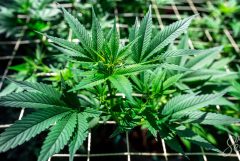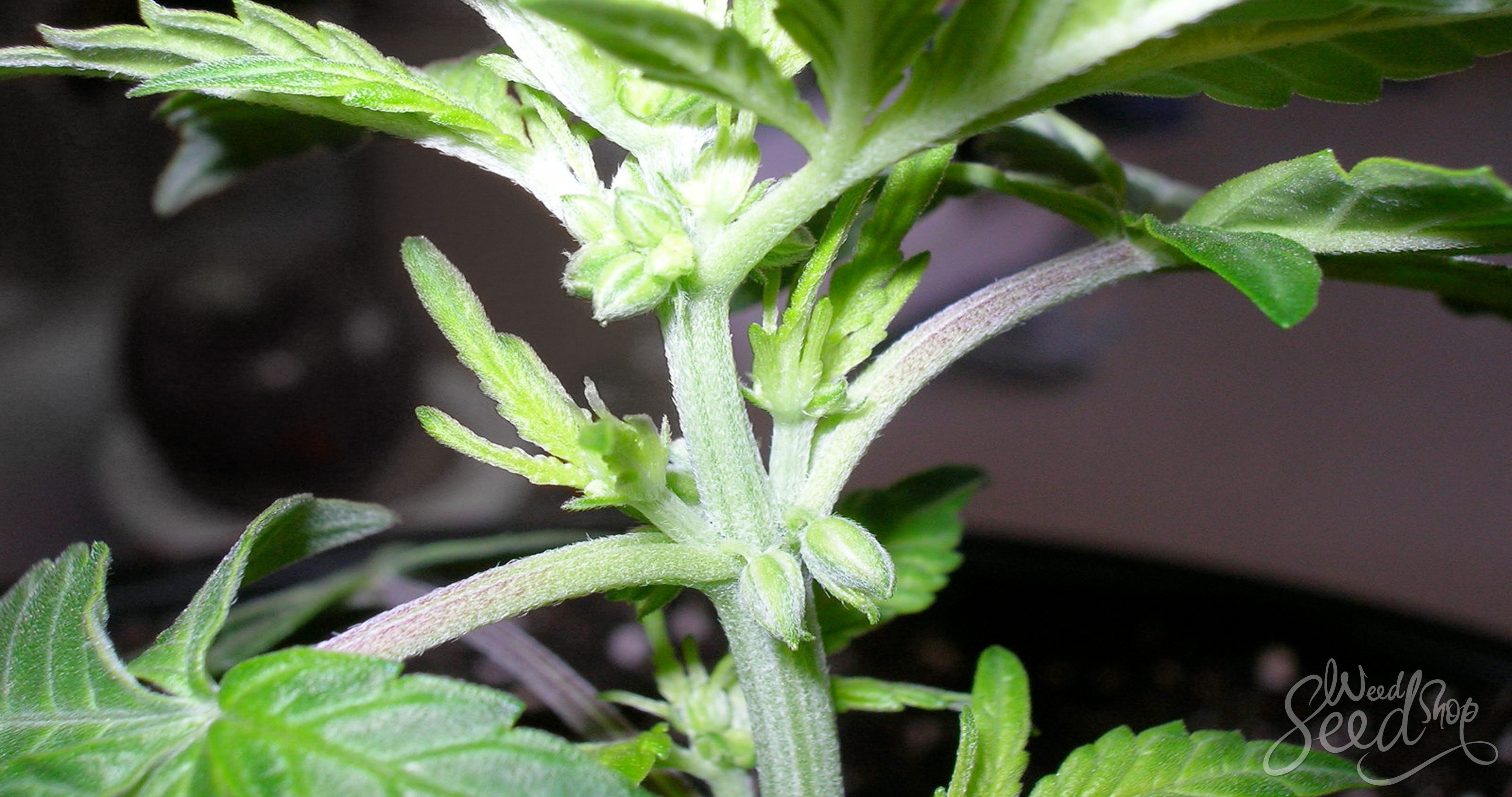Skies of Blue or Seas of Green? Is SOG Right for You? Sea of green is a growing style focused on putting the highest number of plants into the smallest grow area. By maximising the number of plants and minimising the time spent on each grow cycle, you can up your yield by as much as 30%.
- What is SOG?
- How to start a sea of green grow?
- Should I use seeds or clones for sea of green?
- Can I use hydroponics for sea of green?
- What strains are best for sea of green?
- How to set up a sea of green
- How much space do I need for a sea of green?
- How many plants can I grow in a sea of green?
- How long should I vegetate plants in a sea of green?
- Do I need to train plants in a sea of green?
- How much does a sea of green yield?
- Pros & cons of sea of green
Finding the best place to put your setup is always one of the most difficult parts. With so much to consider (heat, air flow, total area) many people have rather limited options. This is especially true if you’re living in an apartment or renting just a single room.
Many growers with limited space opt to grow just one or two plants to try and get as much yield from each. This is probably the easiest solution but it’s also the riskiest. If you only have one plant and something happens to it you could be losing out on months of work.
Luckily, there’s another style for indoor growers with limited space; the sea of green method, a.k.a. SOG.
What is SOG?
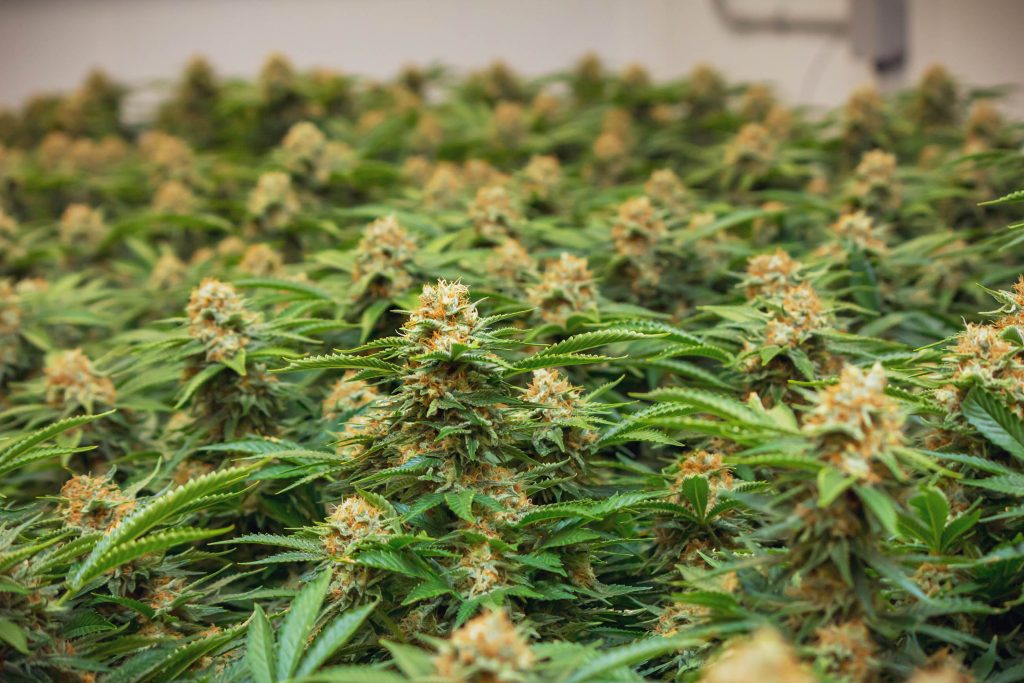
Sea of green (SOG) is a growing style focused on putting the highest number of plants into the smallest grow area. By tightly packing the plants together, it’s possible to cause them to grow together creating a single canopy of buds.
When growing a sea of green, you begin flowering the plants far sooner than a typical grow. By doing this, it’s possible to train their canopy in the most efficient way. The plant’s compact size causes them to focus on developing one main, heavy cola. Since they’ll only need to support a single large flower, they can spend far less time in the vegetative stage. This means a shorter growing cycle, more frequent harvests, and a greater overall yield.
How to start a sea of green grow?
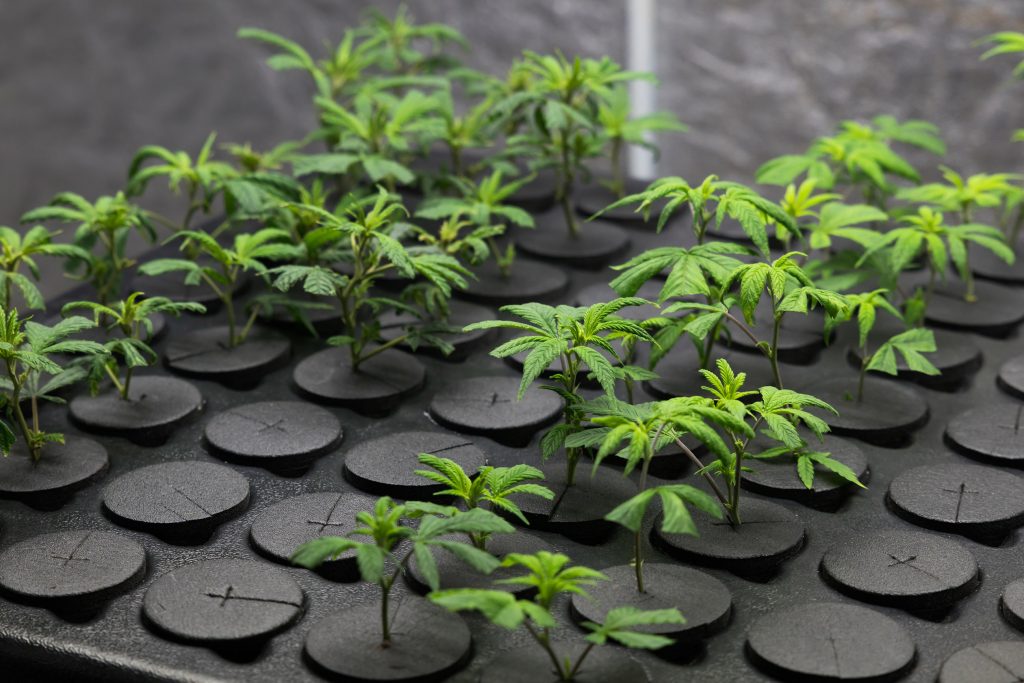
Like any new setup, there are a few things you’ll need to think about before you get started. Are you growing from seeds or clones? Dirt or hydro? What strains are best for sea of green? Don’t worry, we got you.
Should I use seeds or clones for sea of green?
When growing a sea of green, it’s usually best to use clones from a single plant. This is important because it ensures that all of your plants will have the same traits such as growing speed and height. This will help make sure that your canopy grows in nice and evenly.
It is possible to grow a sea of green from seeds but it’s extremely important to use seeds from the same strain. If you can’t get enough seeds to grow a full sea of green, you might be better off growing a smaller number of larger plants. Remember, not every seed will germinate and not every seedling will survive to flowering.
Can I use hydroponics for sea of green?
Technically, yes. There is no reason why sea of green cannot be used with a hydroponics setup. However, it is almost always less ideal than soil for a number of reasons.
One of the biggest advantages of sea of green growing is that it makes the most of a small space. However, hydroponic setups typically require more space than soil as you need to make room for reservoirs and pumps. Additionally, with more plants, getting access to everything is just that much harder.
With that said, many growers who prefer the benefits of hydro (greater control, faster growth cycles) absolutely make it work with a sea of green.
What strains are best for sea of green?
Selecting the right strain is one of the most important parts of a sea of green setup. Ideally, you’ll want to steer clear of long, lanky sativas. Remember, the goal is to keep your plants at the same level.
Further, be sure to avoid any strains that have a reputation as a “slow starter”. Again, the goal with a sea of green is to get these plants up and flowering as quickly as possible. All WeedSeedShop product pages have a category describing how appropriate a strain is for sea of green. We’ve done the tests so you don’t have to.
Can I use autoflower seeds for sea of green?
Again, the answer is “technically, yes”. However, it’s generally not advised. Autoflowering plants are less capable of dealing with stress, and SOG does require some defoliating. It’s true though that autoflowers have become less sensitive through the years, so experienced growers can definitely give SOG a try on autoflowers too. But still, photoperiod (regular or feminized seeds) are generally more favoured by growers attempting training techniques.
How to set up a sea of green
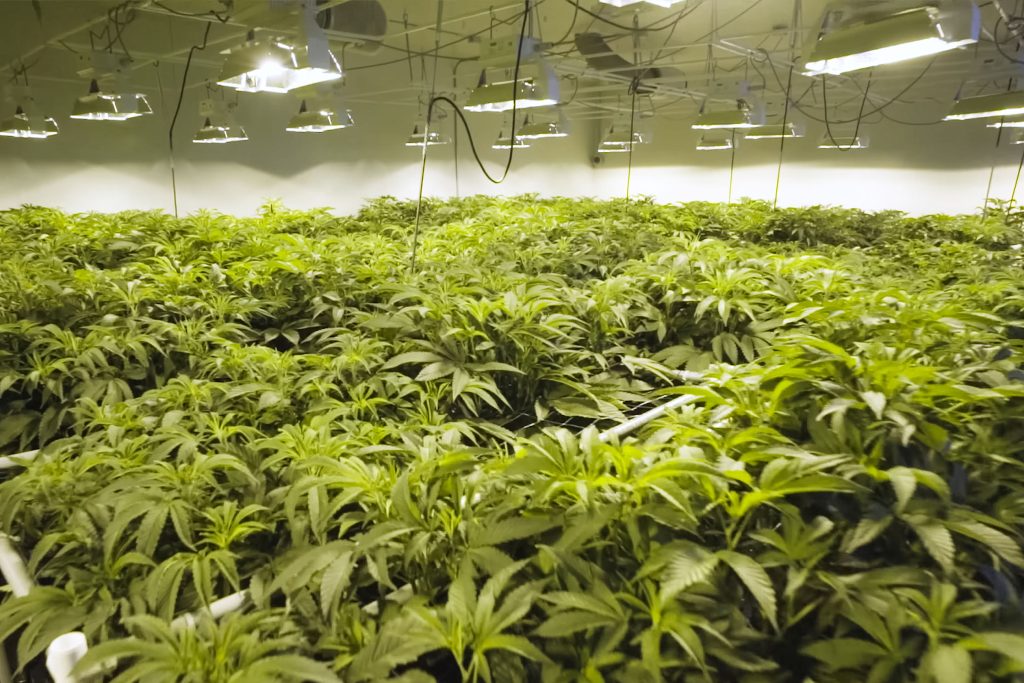
Setting up for a sea of green grow starts just like any other operation so we’ll skip all the finer details and focus on what sets it apart from a more standard grow.
How much space do I need for a sea of green?
Many growers are drawn to sea of green since it can maximise yields in limited space. However, if your goal is truly to increase the speed at which you can harvest, you might find that you need more room than you thought.
Many sea of green growers actually keep two separate grow rooms. One for flowering and one for vegetating. While it is possible to completely skip the vegetation phase with seedlings, for clones, it’s a vital part of the process to allow them time to recover. Additionally, many growers like to keep a few mother plants to take new clones from.
For a single grow, you can get by with as little as 1 square meter.
How many plants can I grow in a sea of green?
First, sea of green setups typically use 4-6 times as many plants as a standard setup in the same space. It’s not at all uncommon to have up to 10 plants per square meter so you definitely want to use smaller pots around 4-6 litters. This will help prevent them from getting too big and to force them to focus resources on a single main flower. Be sure to keep them from being too concentrated to the point where they become stressed from competing for light.
How long should I vegetate plants in a sea of green?
Ultimately, it depends on whether you’re starting from seeds or clones.
- Seeds
If you’re starting from seeds, it’s possible to completely skip the vegetative phase and put your plants straight into flowering as soon as they’ve germinated. However, giving them a week or so to properly establish their roots is never a bad idea.
- Clones
If you’re starting from clones, you’ll need to give them at least 2-3 weeks to get healthy enough to flower. The cloning process is traumatic for a plant and giving them time to recover will give you better results in the long run.
Do I need to train plants in a sea of green?
Generally, no. With so many plants packed together, you won’t be getting wide, bushy plants, and that’s perfectly fine. Only the main cola will get enough light and space to reach its full potential. Many growers using sea of green will choose to remove any side branches below the canopy to allow the plant to focus.
How much does a sea of green yield?
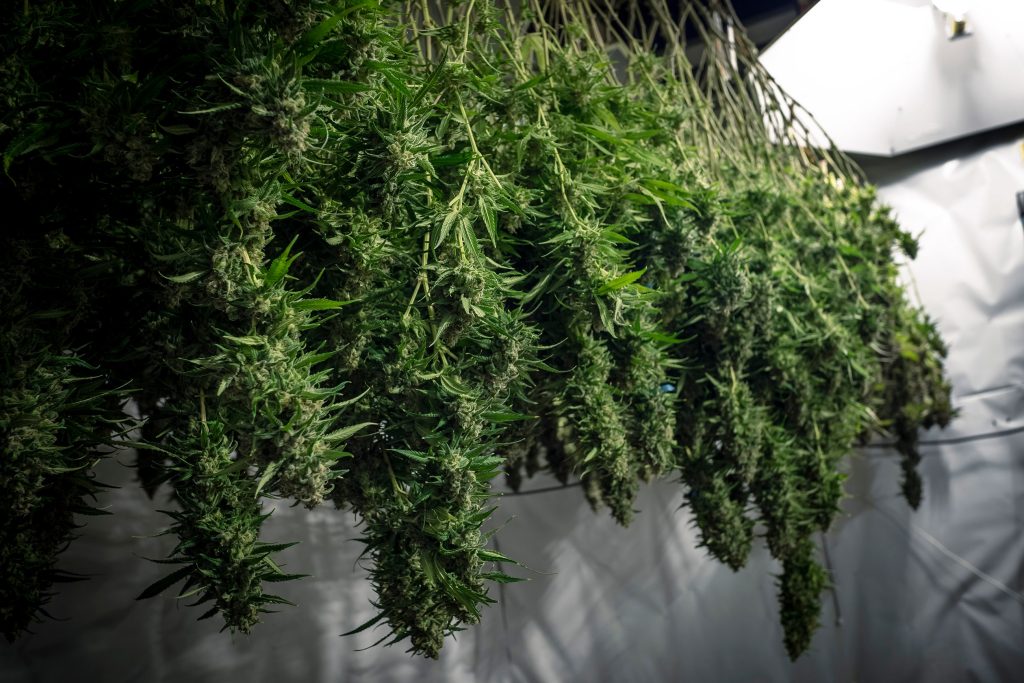
This is really the ultimate question, isn’t it? Will you get more out of a sea of green than a traditional harvest? It depends. Growers typically compare their setup before and after switching to sea of green to check the difference. Often, growers note heavier harvests with a sea of green setup. The actual increase will vary from grow to grow, but an organised grower could see their productivity increase by 30% or more for each harvest.
Pros & cons of sea of green
While an increased harvest is certainly a major benefit, it doesn’t come without trade-offs.
Pros
- Greater yields from the same space
- Faster grow cycles and more frequent harvests
- Perfect for areas with restricted vertical space
- Particularly suitable for indica strains
Cons
- May require more space in the end as two rooms are very helpful
- Significantly more plants may conflict with local regulations for home growers
- More complicated and demanding to plan, implement, and maintain
- Not ideal for multiple strains in the same grow
- Significantly increased daily maintenance time
- More seeds are needed upfront. Luckily, as Europe’s cheapest seed bank, WeedSeedShop is here to help! Did you know WSS Skunk is available in a 25 seed package? Other cheap options are Amnesia and Critical Kush.
So there you have it: A sea of green grow can greatly increase your harvest but comes at the cost of extra maintenance, time, and possibly space.
Got any other tips for growing a sea of green? Help the community out and post them in the comments.





